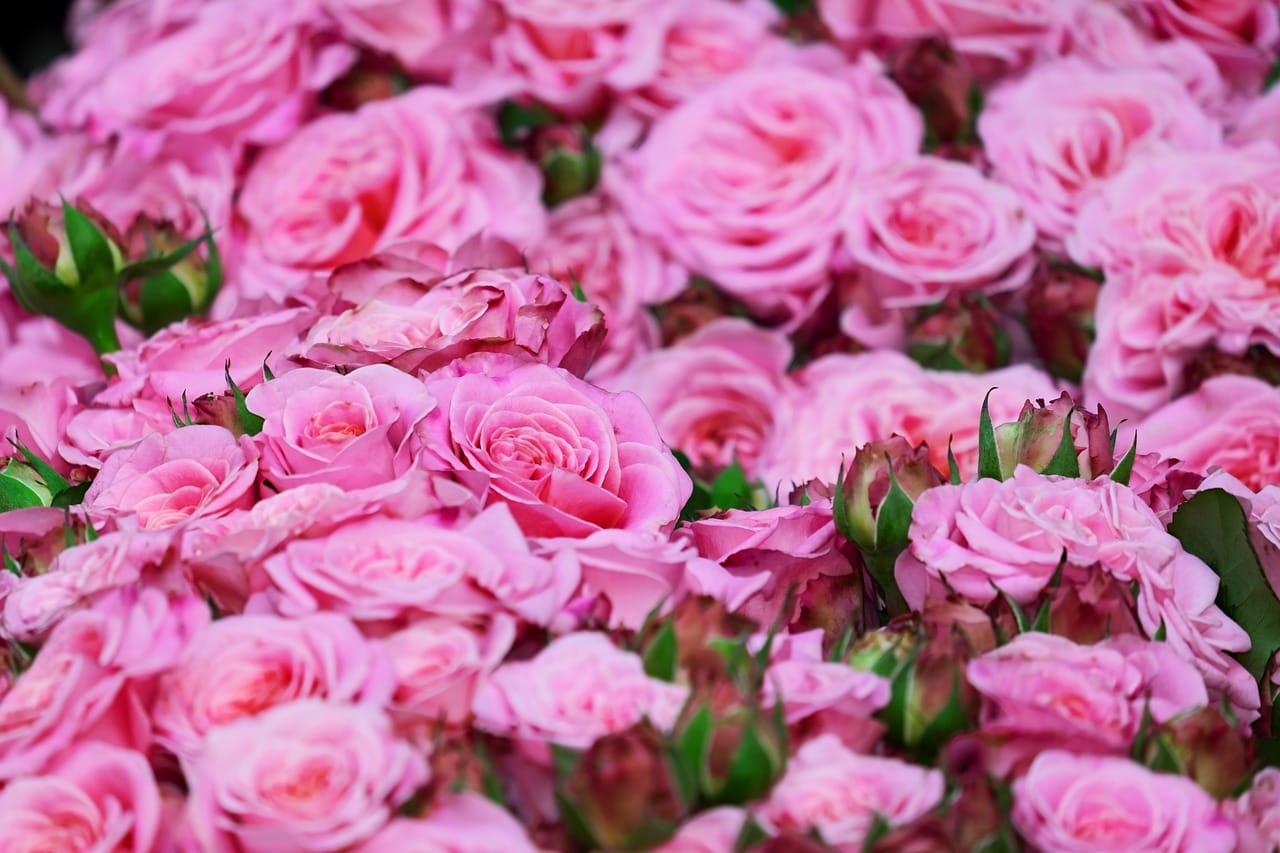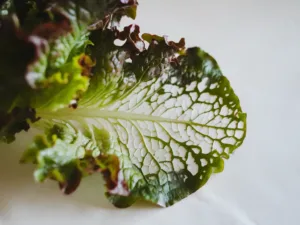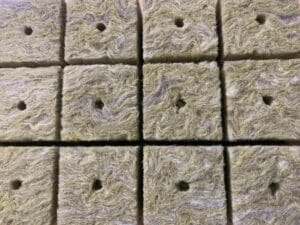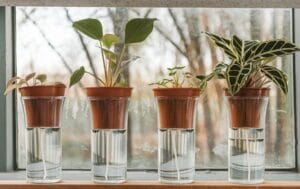Roses are not only the epitome of beauty and elegance, but they also hold a special place in gardens, on terraces, and in living spaces. Growing roses in hydroponics opens up new possibilities for cultivating these magnificent flowers all year round. The biggest advantage is that you can completely control the environmental conditions such as light, nutrients, and water. This allows you to keep roses in perfect condition, regardless of the seasons or weather conditions.
Another major advantage: roses in hydroponics are not susceptible to soil-borne diseases and pests. You’ll never have to deal with nematodes or fungal infections, which are often a problem in traditional cultivation. Moreover, roses in hydroponics are particularly attractive to pollinators like bees and butterflies—an added bonus if you want a lively, blooming environment.
Which Rose Varieties Thrive in Hydroponics?
Not all rose varieties are the same, and this is also true for hydroponic cultivation. If you want to grow your roses for decorative purposes or as cut flowers, there are specific varieties that thrive particularly well in a controlled system. Choosing the right variety is crucial to ensure that your plants grow optimally and bloom abundantly.
Here are some rose varieties that are particularly well-suited for hydroponic cultivation:
- Miniature roses: These small, compact rose types are perfect for hydroponics as they require less space while still offering an impressive display of blooms.
- Hybrid teas: For those who love large, striking flowers, hybrid teas are the ideal choice. They bloom profusely and are excellent as cut flowers.
- Climbing roses: If you’re running a vertical hydroponic system or aiming for a decorative green wall, climbing roses are a good option. They grow upwards and can create impressive flower walls.
Each of these varieties brings its own benefits, depending on what you want to achieve with your rose cultivation—be it a decorative display of blooms or attracting pollinators.
The Ideal Hydroponic System for Roses
Choosing the right hydroponic system is key to the successful growth of your roses. Roses are robust plants, but they require a constant supply of nutrients and water to bloom abundantly. Here are some hydroponic systems that are particularly suitable for roses:
- Nutrient Film Technique (NFT): In this system, a thin layer of nutrient solution continuously flows past the roots of the plants. It is excellent for roses because it ensures good oxygen supply to the roots and prevents the plants from “drowning.” The system is relatively low-maintenance, making it ideal for home use.
- Drip System: Here, the nutrient solution is delivered drop by drop directly to the roots of the plants. This system offers the advantage of precise control over nutrient supply. For roses, this is particularly important, as they require a consistent supply to produce healthy blooms.
- Deep Water Culture (DWC): In this system, plants grow directly in a nutrient solution. It is one of the simplest systems, particularly suitable for growing roses in larger quantities. The roots have constant access to water and nutrients, which can lead to rapid growth.
Each of these systems has its own advantages, but all offer the necessary flexibility to successfully cultivate roses. Which system you choose depends on your space, budget, and cultivation goals.
Growing Roses in Hydroponics
Growing roses in hydroponics can initially be a bit challenging, but with the right approach, you can easily cultivate healthy plants. You have two main options: growing from seeds or using cuttings. Cuttings are often the quicker and more efficient method, as they have a higher success rate and a shorter growth phase.
If you use cuttings, you should initially place them in a moist medium such as rock wool or a special propagation substrate. Ensure the cuttings receive sufficient light and consistent moisture. High humidity helps the cuttings form roots before being transferred to the hydroponic system. Alternatively, you can use special germination boxes that provide the ideal humidity and temperature to accelerate root growth.
If you choose to work with seeds, be aware that germination takes a bit longer. Place the seeds in a propagation medium, keep them moist, and place them in a warm, bright location. The germination rate of rose seeds is not always high, so patience is key. Once the first leaves appear, you can transfer the young plants to the hydroponic system.
Tips for Successful Cultivation:
- Use fresh cuttings from strong mother plants.
- Maintain high humidity, especially during the propagation phase.
- Ensure the propagation substrate remains slightly moist, but avoid waterlogging.
- Transfer young plants to the hydroponic system only once they have developed a strong root system.
Substrate: The Right Choice for Roses
The substrate plays a crucial role in hydroponic cultivation, including for roses. Since the roots do not grow in soil in hydroponic systems, you need a substrate that provides stability to the plants while ensuring good water and nutrient supply. Some substrates have proven particularly effective in rose cultivation.
Rock wool is one of the most commonly used substrates in hydroponics. It offers excellent water retention and aerates the roots well, which is particularly important for the sensitive roots of roses. Rock wool is available in various sizes, allowing it to be adapted for different hydroponic systems.
Clay pellets are another good choice. They provide the plants with a solid structure while allowing good drainage. Clay pellets are particularly suitable for systems like the drip system, as they quickly drain excess nutrient solution, protecting the roots from waterlogging.
Coconut fiber is an eco-friendly alternative and is well-suited for roses. It retains water well while ensuring the roots receive enough oxygen. Another advantage of coconut fiber is that it is biodegradable and can be easily disposed of after use.
Which substrate you choose depends on your hydroponic system and personal preferences. It’s important that the substrate evenly distributes nutrients and water to the roots and stabilizes the plant.
Temperature: The Ideal Climate for Roses in Hydroponics
Roses love a temperate climate, and this is also true for hydroponic cultivation. The right temperature is crucial for keeping your plants healthy and blooming continuously. Ideally, roses should be kept at temperatures between 18°C and 25°C. This range is optimal for promoting root growth and encouraging flower formation.
A climate that is too cold can slow down the growth of roses and inhibit flower formation. Temperatures below 10°C can even cause the plant to enter a sort of “dormant mode,” where it almost completely stops growing. On the other hand, temperatures that are too high (above 30°C) can stress the plants, leading to reduced flower formation and increased water demand.
Indoors, you can relatively easily control the temperature. In greenhouses or outdoor systems, it’s important to ensure that extreme temperature fluctuations are avoided. Use heating systems in colder months and ensure adequate ventilation or shading in the summer.
Light: The Right Lighting for Roses
Light is one of the most important factors for the success of your rose cultivation in hydroponics. Roses are so-called “light lovers” and need plenty of it to grow vigorously and produce abundant blooms. In natural environments, roses enjoy full sun, which corresponds to about 6 to 8 hours of direct sunlight per day. In hydroponics, especially indoors, you need to simulate this amount of light to achieve the best results.
A combination of LED lights and natural light works best, if you have the option to place the plants near windows. LED lights have the advantage of being energy-efficient and providing specific light wavelengths that support plant growth. You should ensure that the lighting you choose covers both the blue light spectrum (promotes vegetative growth) and the red light spectrum (promotes flower formation).
If you grow your roses outdoors in a hydroponic system, you should ensure they receive adequate sunlight, or at least have access to indirect light during the brighter hours of the day. Too little light can hinder growth, while too much direct sun (especially in hot summer months) can cause sunburn on the leaves.
Lighting Tips:
- Use LED grow lights with adjustable spectra for the best results.
- Ensure your roses receive at least 12 hours of light per day.
- In hot regions, some shading may be necessary in the summer to protect the leaves from burns.
pH and EC: The Perfect Balance for Roses
For optimal nutrient uptake, the pH level of the nutrient solution plays a central role in hydroponic cultivation. For roses, the ideal pH level is between 5.5 and 6.5, slightly acidic. In this range, the roots of the plants can best absorb the necessary nutrients. A pH level that is too high or too low can lead to nutrient deficiencies and significantly impair plant growth.
It’s important to regularly measure the pH level, as it can fluctuate due to the addition of nutrients or natural processes in the solution. Use pH test strips or a digital meter to keep an eye on the values. If the pH level is outside the optimal range, you can use special pH regulators to adjust it.
In addition to the pH level, the EC level (Electrical Conductivity) also plays an important role. The EC level indicates how concentrated the nutrient solution is—how many nutrients are actually present in the solution. The ideal EC level for roses is in the range of 1.5 to 2.5 mS/cm. A too high EC level means that too many nutrients are present, which can “burn” the roots. A too low EC level, on the other hand, indicates a nutrient deficiency.
Tips for pH and EC Control:
- Measure the pH level at least once a week and adjust it if necessary.
- Ensure that the EC level remains within the recommended range to ensure optimal nutrient supply.
- Use pH-Up and pH-Down solutions to regulate the pH level of your nutrient solution.
Fertilizer: Nutrients for Lush Blooms
Roses are hungry plants that require a constant supply of nutrients to grow healthily and develop magnificent blooms. In hydroponics, it is particularly important to use the right fertilizer mix, as the plants rely on a constant nutrient supply. A balanced N-P-K mix (nitrogen, phosphorus, potassium) is ideal for roses, with phosphorus being particularly important for flower formation.
A typical nutrient plan for roses might include a higher proportion of phosphorus and potassium during the flowering phase to promote flower formation, while adding a bit more nitrogen during the vegetative growth phase to encourage leaf growth. Special bloom boosters can also be useful in extending the flowering period and intensifying the color of the blooms.
In addition to the main nutrients, micronutrients such as iron, magnesium, and calcium are essential for the growth of roses. A deficiency in these nutrients can lead to yellow leaves, weak growth, or deformed blooms. Therefore, it is important to use a fertilizer solution that covers all necessary macro- and micronutrients.
Fertilization Recommendations:
- Use a balanced rose fertilizer with an N-P-K ratio of about 10-10-10 during the growth phase.
- Increase the phosphorus content (e.g., to 5-15-10) when the flowering phase begins.
- Ensure the nutrient solution also contains micronutrients like magnesium and iron to prevent deficiencies.
Harvesting Roses for Bouquets
The moment you’ve been working towards: harvesting your beautiful rose blooms! To ensure your roses stay fresh as long as possible and fully display their beauty, there are some important points to consider. The best time to cut roses is early in the morning or late afternoon. During these times, the plants are most hydrated, and the blooms last longer after cutting.
For cut roses, you should harvest the blooms when they are just opening but not yet fully bloomed. This ensures that the blooms stay fresh longer when placed in a vase. Always use sharp scissors or a sharp knife to cut the stems at an angle—a slanted cut increases the surface area through which the rose can absorb water and prevents the stems from sticking to the bottom of the vase and rotting.
After cutting your roses, place them immediately in a bucket of water. It’s also advisable to remove the lower leaves so they don’t sit in the water and start to rot, which shortens the lifespan of the blooms. You can also add some floral preservative to the water to maintain the fresh appearance of the roses even longer.
Tips for Longer Lasting Blooms:
- Cut the roses early in the morning or late afternoon.
- Remove the lower leaves and cut the stems at an angle.
- Place the cut roses directly in fresh water and use a preservative.
Diseases and Pests: Protecting and Caring for Roses
Even in hydroponics, roses are not completely protected from diseases and pests. Some of the most common problems that can occur are aphids, spider mites, and powdery mildew. Fortunately, with the right care and prevention, many of these issues can be avoided or quickly managed.
Aphids are one of the most common pests on roses. These small, green insects suck the sap from the plants, leading to distorted growth and weakened blooms. Fortunately, you can often simply wash aphids off the plant with a strong stream of water or treat them with a mixture of water and soap. The use of natural predators like ladybugs can also help keep aphids in check.
Spider mites are tiny pests that often appear in dry and warm environments. They cause tiny yellow spots on the leaves and can weaken the plant. You can often identify them by fine webs on the leaves and stems. High humidity can keep spider mites at bay, as can regularly spraying the plants with water. If the infestation is more severe, special insecticides or neem oil can help.
Powdery mildew is a fungal disease that occurs especially in high humidity and low air circulation. You can recognize it by a white, powdery coating on the leaves. To prevent powdery mildew, ensure your roses are well-ventilated and avoid over-watering the leaves. If powdery mildew occurs, you can combat it with a special fungicide.
Prevention Tips:
- Regular inspections of the plants help to detect pests and diseases early.
- Maintain high humidity to keep spider mites away.
- Use biological agents like neem oil or natural predators against aphids.
- Ensure good ventilation to prevent fungal diseases like powdery mildew.
Special Tips for Roses in Hydroponics
Cultivating roses in hydroponics offers many advantages, but there are also some special tricks to get the best out of your plants. Here are a few special tips to make your roses even more magnificent and eager to bloom.
1. Pruning for More Blooms: Regularly pruning your roses not only helps keep the plant compact and healthy but also promotes bloom growth. By removing wilted blooms and weak shoots, you direct the plant’s energy into developing new flowers. Be careful not to cut the plant back too much, but regular shaping will reward you with lush blooms.
2. Changing the Nutrient Solution: A clean, fresh nutrient solution is essential in hydroponics. While roses are robust, old nutrient solutions can slow growth and lead to diseases. You should change the nutrient solution every two weeks to ensure optimal supply with fresh nutrients. Also, make sure to regularly clean the hydroponic system to avoid deposits and algae growth.
3. Supportive Measures for Blooming: If you want to achieve particularly many and large blooms, you can use special bloom boosters. These contain additional doses of phosphorus and potassium that promote flowering. However, be careful not to overuse these boosters, as overdosing could stress the plants.
With these additional tricks, you can ensure that your roses in hydroponics not only remain healthy but also produce magnificent blooms.
Roses in Hydroponics – A Rewarding Endeavor
Growing roses in hydroponics opens up a world full of possibilities. You can enjoy the beauty and elegance of these classic flowering plants without worrying about soil problems or unpredictable weather conditions. With the right techniques and the appropriate system, you can cultivate strong, healthy roses all year round that make an impressive impact both as decoration and as cut flowers.
The great advantage of hydroponics is that you have complete control over the environmental conditions of your roses. Whether it’s about light, temperature, nutrients, or pH level—you decide what your plants need, thus creating perfect growth conditions. This makes cultivation not only more efficient but also more successful, especially when it comes to promoting magnificent blooms.
So, if you’re looking for a way to cultivate roses in a modern and sustainable way, hydroponics is definitely worth a try. Your roses will reward you with an endless display of blooms!







